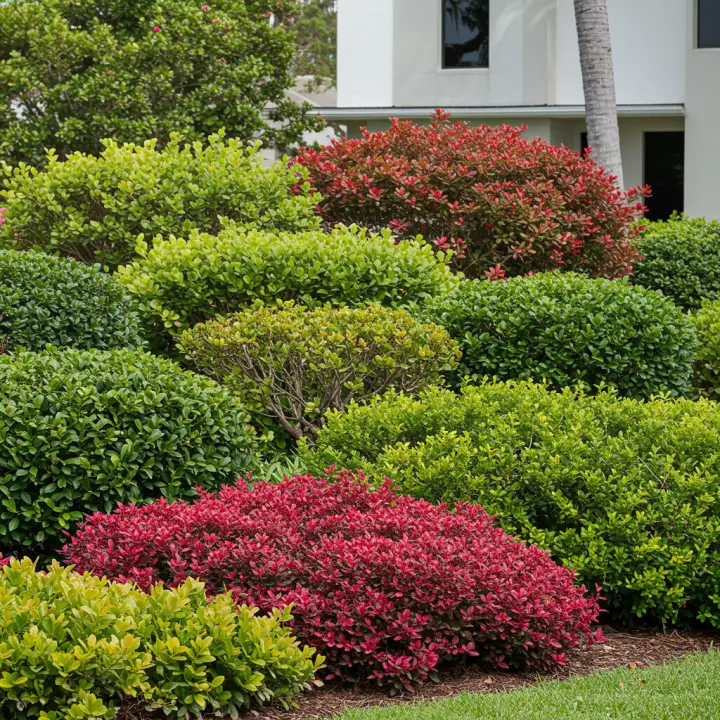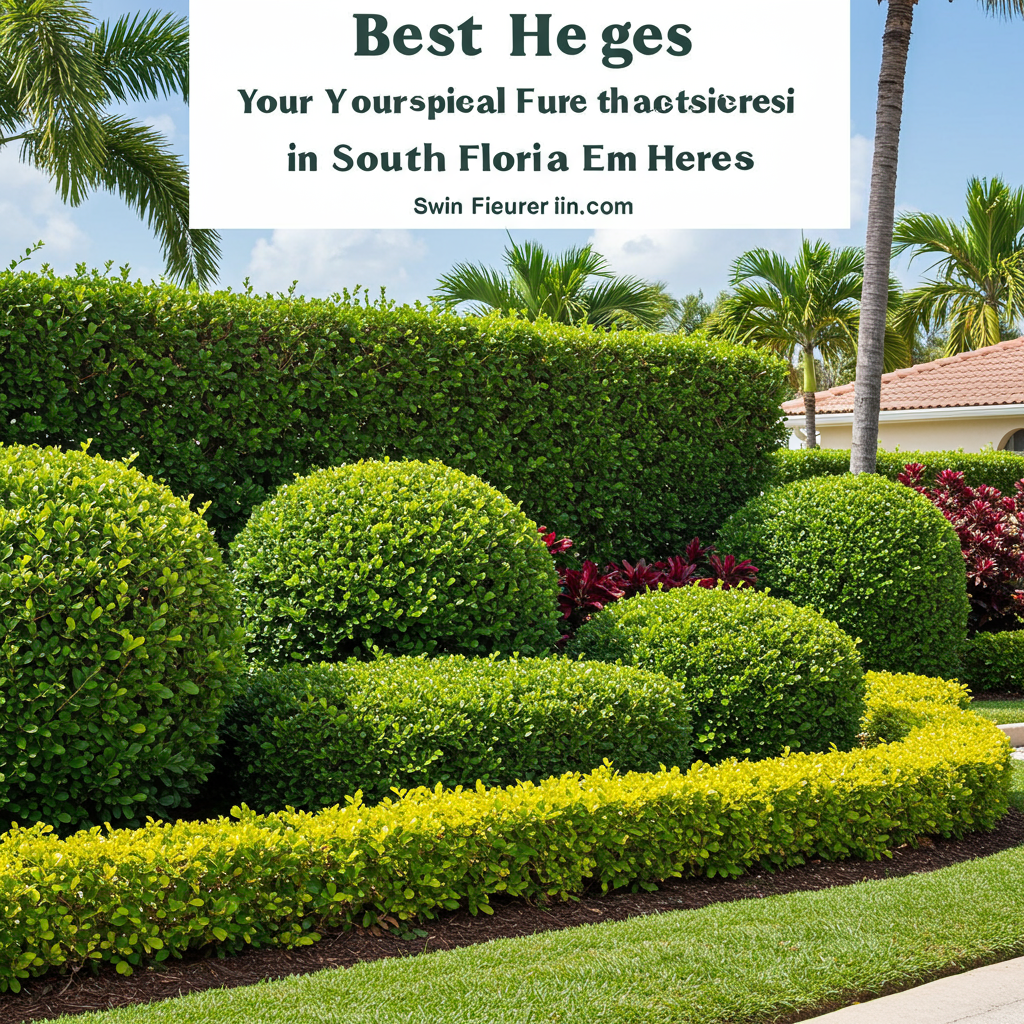Planning a lush, private, or inviting landscape in South Florida? This guide introduces you to the best hedges for South Florida, providing ultimate and easy options that thrive in the region’s unique climate. Discover robust, beautiful plants perfectly suited for creating your perfect green wall.
South Florida’s vibrant landscape offers unique opportunities and challenges for gardeners. From the relentless sun and high humidity to the occasional hurricane, choosing the right plants for your hedges is crucial for long-term success. This comprehensive guide helps you navigate the options, focusing on species that not only survive but truly flourish, providing beauty, privacy, and ease of care.

Why Choose Hedges for Your South Florida Landscape?
Hedges do more than just mark property lines. They are living architectural features that significantly enhance any South Florida home or business.
Enhanced Privacy and Security
A well-developed hedge acts as a natural screen, offering unparalleled privacy from neighbors and passersby. Dense evergreen hedges create a year-round barrier, giving your outdoor spaces a secluded, intimate feel.
Aesthetic Appeal and Curb Appeal
Hedges frame your property, adding structure, texture, and often vibrant pops of color or fragrant blooms. They can hide unsightly features, define garden rooms, or simply add a polished finish to your landscape, boosting curb appeal and property value.
Windbreaks and Noise Reduction
In areas prone to strong breezes or near busy roads, a dense hedge can significantly reduce wind penetration and muffle ambient noise. This creates a calmer, more comfortable environment in your yard or patio.
—
Understanding South Florida’s Unique Climate Challenges
Before selecting your hedges, it’s essential to understand the specific environmental factors that influence plant growth in South Florida.
Heat, Humidity, and Rainfall
South Florida experiences year-round warmth, high humidity, and distinct wet and dry seasons. Plants must be tolerant of intense sun and often thrive in moist, well-draining soils.
Salt Tolerance (Coastal Areas)
If your property is near the coast, salt spray and saline soils are major considerations. Selecting salt-tolerant species is paramount to prevent leaf burn and stunted growth.
Pest and Disease Resistance
The warm, humid climate can be a breeding ground for various pests and fungal diseases. Choosing resistant varieties reduces the need for constant chemical treatments.
Hurricane Resilience
While no plant is hurricane-proof, some species are better equipped to withstand strong winds and heavy rains, or recover more quickly if damaged. Strong root systems and flexible branches are key.
—
Criteria for the Ultimate & Easy South Florida Hedge
When we talk about the “best” and “easy” hedges for South Florida, we prioritize several key characteristics.
Fast Growth Rate
Many homeowners want established hedges quickly. Fast-growing species provide cover and structure in a shorter amount of time, though they often require more frequent pruning.
Low Maintenance Requirements
An “easy” hedge means less work for you. This includes plants that are drought-tolerant once established, naturally pest-resistant, and don’t require constant pruning to maintain their shape.
Drought and Salt Tolerance
With water restrictions common and coastal living popular, plants that can handle periods of dryness and saline conditions are highly valued.
Pest and Disease Resistance
The less you have to spray or treat your hedges, the easier they are to maintain. Resilient plants reduce your workload and support a healthier garden ecosystem.
Evergreen vs. Deciduous
For consistent privacy and year-round greenery, evergreen hedges are generally preferred in South Florida. Deciduous plants, which lose their leaves, are less common for privacy hedges in this region.
—
Top Picks: Best Hedges for South Florida
Here are some of the most reliable and beautiful hedge options that thrive in South Florida’s unique conditions.
Classic & Reliable Choices
These are workhorses of the South Florida landscape, known for their density, versatility, and robust nature.
Green Island Ficus (Ficus microcarpa ‘Green Island’)
Pros: Fast-growing, dense, excellent for formal hedges, tolerant of pruning into various shapes, relatively drought-tolerant once established.
Cons: Can grow very large if not pruned, aggressive root system (plant away from foundations/pipes).
Ideal for: Creating quick, dense privacy screens or formal borders.
Podocarpus (Podocarpus macrophyllus)
Pros: Slow to moderate growth, fine texture, very versatile (formal or informal), excellent for narrow spaces, low maintenance, relatively pest-free.
Cons: Slower to establish full privacy compared to ficus.
Ideal for: Formal hedging, narrow spaces, medium-height screens.
Clusia (Clusia rosea)
Pros: Extremely tough, highly salt-tolerant, good hurricane resistance, unique leathery “autograph tree” leaves, low maintenance.
Cons: Slower growth rate, can grow very wide if not maintained.
Ideal for: Coastal properties, highly exposed areas, creating a very strong, dense barrier.
Viburnum (Viburnum odoratissimum or Viburnum suspensum)
Pros: Fast-growing, large glossy leaves, fragrant white flowers (Odoratissimum), excellent for informal or formal hedges, adaptable to various soil types.
Cons: Can be susceptible to thrips or spider mites if stressed.
Ideal for: Rapid privacy, adding a flowering element.
Flowering & Vibrant Options
For those who want extra color and fragrance, these hedges combine functionality with floriferous beauty.
Ixora (Ixora coccinea)
Pros: Abundant clusters of vibrant red, orange, pink, or yellow flowers almost year-round, attracts hummingbirds, suitable for lower hedges.
Cons: Prefers acidic soil, can yellow if iron deficient, somewhat susceptible to scale and nematodes, not very fast-growing.
Ideal for: Lower flowering borders, adding tropical color.
Firebush (Hamelia patens)
Pros: Native, drought-tolerant, fast-growing, vibrant red-orange tubular flowers all year, attracts hummingbirds and butterflies, very low maintenance.
Cons: Can get leggy if not pruned, loses some leaves in colder winters (though rare in SF).
Ideal for: Eco-friendly gardens, informal hedges, attracting wildlife.
Oleander (Nerium oleander)
Pros: Exceptionally tough, drought-tolerant, salt-tolerant, prolific flowers (white, pink, red) for most of the year, very fast-growing.
Cons: ALL PARTS ARE HIGHLY TOXIC. Use with extreme caution, especially around children and pets. Can get leggy if not pruned.
Ideal for: Roadside plantings, large property boundaries away from play areas, extremely challenging sites.
Native & Eco-Friendly Options
Choosing native plants supports local ecosystems, requires less water, and generally means easier care.
Simpson’s Stopper (Myrcianthes fragrans)
Pros: Native, moderate growth, fine texture, attractive coppery new growth, fragrant white flowers followed by small red berries (loved by birds), very low maintenance, good drought tolerance.
Cons: Slower to achieve full privacy.
Ideal for: Wildlife gardens, informal hedges, medium-height screens.
Silver Buttonwood (Conocarpus erectus ‘Sericeus’)
Pros: Native, exceptionally salt-tolerant (perfect for coastal areas), beautiful silvery-gray foliage, very tough and adaptable, moderate to fast growth.
Cons: Can get quite large if not maintained.
Ideal for: Coastal properties, highly exposed areas, informal screens, unique color.
—
Essential Tips for Planting and Maintaining Your South Florida Hedge
Even with the best plant choices, proper care is crucial for a thriving hedge.
Site Selection and Soil Preparation
Most South Florida hedges prefer full sun (6+ hours per day) and well-draining soil. Amend heavy clay or very sandy soils with organic matter to improve drainage and nutrient retention.
Proper Planting Techniques
Dig a hole twice as wide as the root ball and just as deep. Gently remove the plant from its container, loosen any circling roots, and place it so the top of the root ball is level with the surrounding soil. Backfill, tamp gently, and water thoroughly.
Watering and Fertilization
Establishment: Water frequently during the first few months, ensuring the soil remains consistently moist but not waterlogged.
Established Hedges: Most chosen hedges are drought-tolerant once established. Water deeply when the top few inches of soil are dry.
Fertilization: Use a balanced slow-release fertilizer designed for South Florida plants, typically applied 2-3 times per year (spring, summer, fall). Follow product instructions.
Pruning for Shape and Health
Early Pruning: Prune young hedges to encourage branching and fullness.
Maintenance Pruning: Trim regularly to maintain desired height and shape. Aim to keep the bottom wider than the top so lower branches receive sunlight.
Timing: Avoid heavy pruning during extreme heat or immediately before a freeze.
Pest and Disease Management
Monitor your hedges regularly for signs of pests or diseases. Healthy, well-maintained plants are more resistant. Address problems early with appropriate organic or chemical controls if necessary.
—
FAQs: Answering Your South Florida Hedge Questions
How fast do South Florida hedges grow?
Growth rates vary. Some, like Green Island Ficus and Viburnum, can grow 2-3 feet per year with optimal conditions. Others, like Podocarpus and Clusia, grow more moderately at 1-2 feet per year.
What are low-maintenance hedges for South Florida?
Clusia, Podocarpus, Firebush, Silver Buttonwood, and Simpson’s Stopper are excellent low-maintenance choices.

